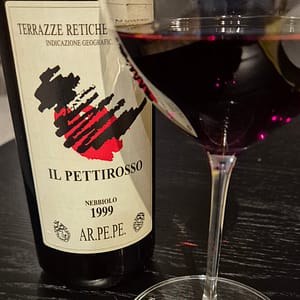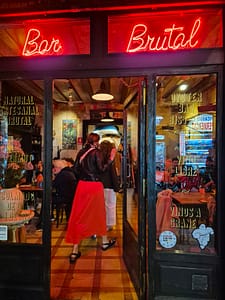My daughter was born in 1999. Many years ago I collected a case of wines to give her at her 18th birthday. The last of these we had the opportunity to enjoy together last week.
High in the northern reaches of Lombardy, where the Alps rise toward Switzerland, lies Valtellina – a region often overlooked in favour of its more famous Nebbiolo siblings from Piemonte. But for those who take the time to explore it, Valtellina offers singular wines that speak softly but persistently. One such wine is Il Pettirosso, made by Ar.Pe.Pe., a family producer whose dedication to alpine Nebbiolo is both steadfast and poetic.
Ar.Pe.Pe. stands for Arturo Pelizzatti Perego, the man who, in 1984, reclaimed the family’s historic vineyards and gave new life to a tradition dating back to the 1860s. Today, the winery is in the hands of his children – Isabella, Emanuele, and Guido – who continue to work the steep terraces of Sassella and Grumello with a mix of devotion and defiance. In these dramatic landscapes, handwork isn’t just a choice, it’s a necessity.
Il Pettirosso is often seen as the most graceful expression in the Ar.Pe.Pe. range – low sulphite, spontaneous fermentation, a cuvée that blends fruit from both Sassella and Grumello, and aged in large old botti before further ageing in bottle. It is not the most powerful wine, nor the most structured. But what it offers is clarity, nuance, and a kind of unforced beauty that rewards patience.

Il Pettirosso 1999 (Ar.Pe.Pe.)
Pale brick red with amber highlights, translucent and delicate. The nose opens with dried rose petals, truffle, orange peel and forest floor, followed by a gentle smokiness and a whisper of Alpine herbs. On the palate, the wine is featherlight yet persistent, with fine, resolved tannins and a graceful acidity that carries flavours of sour cherry, tea leaf, and balsamic nuances. The finish is long, echoing the wine’s mountain origins and meditative age. A wine not of volume, but of resonance.
Price: Medium
Leave a Comment






















